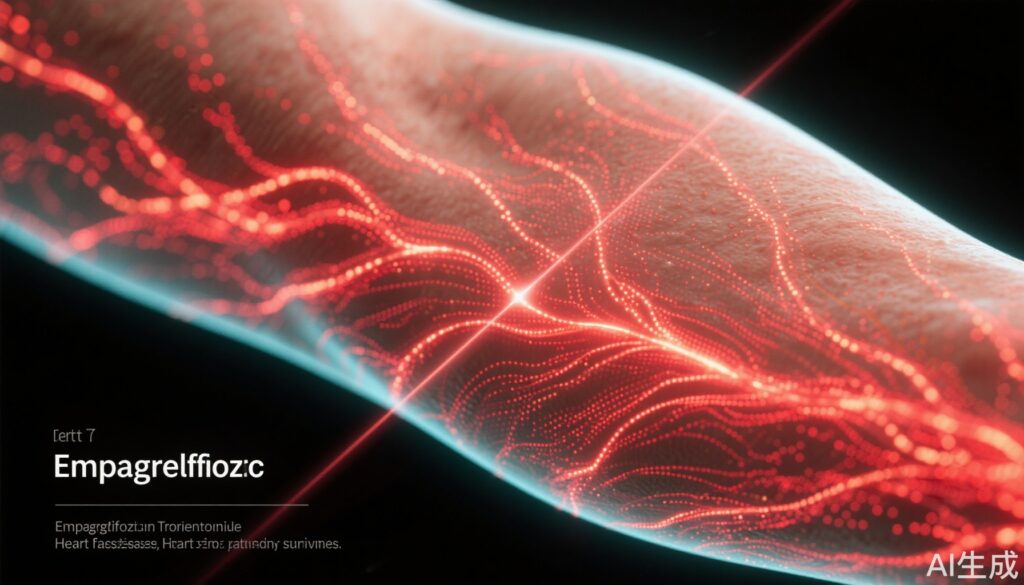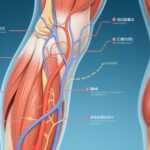Study Background and Disease Burden
Heart failure with preserved ejection fraction (HFpEF) is a complex clinical syndrome characterized by normal left ventricular ejection fraction but impaired cardiac relaxation and filling. Despite its high prevalence, particularly in elderly populations, effective pharmacological options remain limited, and the underlying pathophysiology is incompletely understood. Microvascular dysfunction has been increasingly recognized as a key contributor to HFpEF pathogenesis, exacerbating myocardial stiffness and systemic vascular resistance. Empagliflozin, a sodium-glucose cotransporter-2 (SGLT2) inhibitor, has demonstrated clinical benefit in HFpEF, but its precise mechanisms—beyond glycemic control—are unclear. Understanding how empagliflozin affects systemic microvascular function could elucidate its therapeutic actions and reveal modifiable vascular targets in HFpEF management.
Study Design
This pre-post intervention study enrolled 26 patients diagnosed with HFpEF based on clinical and echocardiographic criteria, all deemed eligible for empagliflozin therapy. Patients received empagliflozin 10 mg daily for three months. Peripheral microvascular function was assessed by laser speckle contrast analysis (LASCA) of the dorsal forearm skin. Vasoactive stimuli—acetylcholine (endothelium-dependent), insulin (vascular insulin action), and sodium nitroprusside (endothelium-independent)—were administered via iontophoresis to provoke microvascular blood flow responses. Cutaneous vascular conductance (CVC), the primary endpoint, was measured at baseline and after treatment. Quality of life (QoL) was also evaluated using the EQ-5D-5L questionnaire.
Key Findings
The cohort had a mean age of 74 years, with a predominance of females (62%). After three months of empagliflozin treatment, the microvascular response to acetylcholine significantly decreased (mean CVC from 0.77 ± 0.24 to 0.64 ± 0.20, p < 0.001), indicating reduced endothelium-dependent vasodilation. Conversely, insulin-mediated vasodilation improved markedly (CVC increased from 0.61 ± 0.43 to 0.81 ± 0.32, p = 0.03), suggesting enhanced vascular insulin sensitivity. The response to sodium nitroprusside, representing smooth muscle function independent of endothelial influence, remained unchanged.
Interestingly, changes in microvascular reactivity did not correlate significantly with quality-of-life improvements, highlighting the complex relationship between vascular function and clinical symptoms in HFpEF.
Expert Commentary
These findings reveal a nuanced effect of empagliflozin on peripheral microvasculature in HFpEF. The diminished acetylcholine response contrasts with the improved insulin-mediated vasodilation, suggesting that empagliflozin’s vascular benefits may be more related to modulation of insulin signaling pathways in the vasculature rather than a global enhancement of endothelial nitric oxide bioavailability or direct smooth muscle relaxation.
Given the centrality of systemic microvascular dysfunction in HFpEF pathophysiology, modulation of insulin-mediated vascular responses could contribute to improved cardiac and peripheral hemodynamics. However, the decrease in acetylcholine responsiveness warrants further mechanistic exploration and long-term outcome studies.
Limitations include the small sample size and lack of a control group, which precludes definitive causal inferences. Moreover, peripheral microvascular measurements, while informative, may not fully represent myocardial microvascular changes.
Conclusion
Empagliflozin treatment in patients with HFpEF modifies peripheral microvascular function, characterized by enhanced insulin-mediated vasodilation and reduced acetylcholine-induced blood flow. These data suggest empagliflozin may selectively improve vascular insulin signaling pathways rather than exert a uniform effect on endothelial or smooth muscle function. Systemic microvascular dysfunction thus represents a potentially modifiable therapeutic target in HFpEF. Further studies are needed to clarify the clinical significance of these vascular changes and determine their impact on cardiac outcomes and patient-reported measures.
References
Mourmans SGJ, Achten A, Hermans R, et al. The effect of empagliflozin on peripheral microvascular dysfunction in patients with heart failure with preserved ejection fraction. Cardiovasc Diabetol. 2025 Apr 25;24(1):182. doi: 10.1186/s12933-025-02679-8. PMID: 40281528; PMCID: PMC12023568.
ClinicalTrials.gov. Trial registration: NCT06046612.



